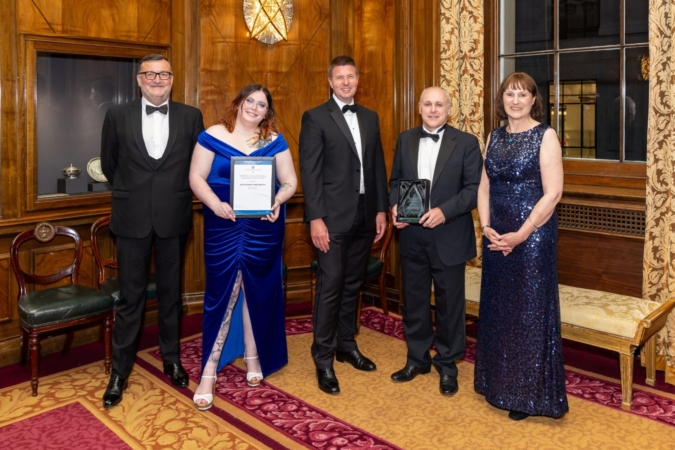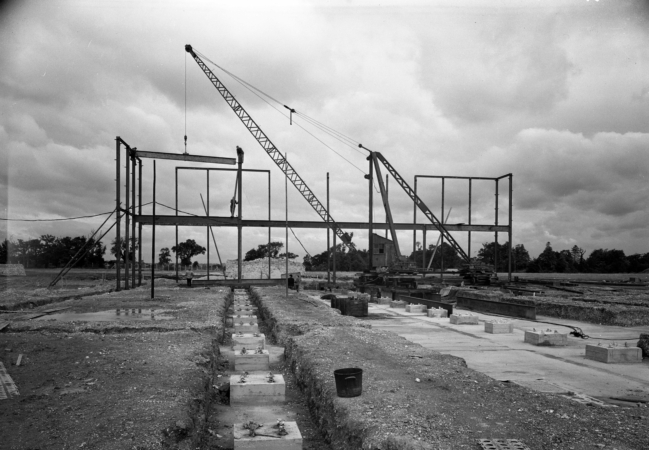Celebrating 60 years of Forensic Seismology at AWE Blacknest
AWE Blacknest is home to AWE’s Forensic Seismology team. Here, techniques are developed to distinguish seismic signals generated by underground nuclear explosions from those generated by earthquakes. This work is pivotal to the UK’s verification of the Comprehensive Nuclear-Test-Ban Treaty (CTBT), which bans any nuclear weapons test explosion or any other nuclear explosion. This year, we celebrate 60 exciting years of research and collaboration at Blacknest.
The rapid increase of nuclear testing in the 1950s led to growing global concern about a nuclear arms race and the associated radioactive fallout risks. As a result, negotiations began between the US, UK, and the Soviet Union on a new treaty to ban all forms of nuclear testing.
From the start, international experts expressed concern about how compliance would be verified. Early discussions showed states would only ratify such a treaty if there was a system that could effectively monitor for and detect all forms of nuclear explosions, and while techniques to do so in the atmosphere, underwater and in space were deemed effective, the same could not be said for those underground.
Back in the 1960s, forensic seismology was not as rigorous a field as it is today. There was not only a lack of seismic data from nuclear testing, but scientists also had to address the difficult challenge of distinguishing seismic waves from underground test explosions from those of earthquakes. Furthermore, there were concerns that seismic signals from an underground explosion could be muffled, making it easier to evade detection. Sir William Penney, then Director of the former Atomic Weapons Research Establishment (AWRE), once even called the field a “stone-age science” and saw much opportunity for growth.
As such, Penney realised the UK was well placed to develop this field. AWRE was approached for a few initial studies, and the UK Government approved funding for a seismological research facility to be set up. Initially located in the restricted main site AWE Aldermaston, the facility later relocated to Blacknest in 1961, which allowed more opportunities for both UK and international collaborations.
Over the next sixty years, Blacknest made significant contributions to shaping the global approach to nuclear test monitoring. Generations of scientists contributed to the effort – from building advanced recording arrays and developing sensor technology, to developing new methods of processing large volumes of data – in order to understand seismic signals and create robust criteria to differentiate between sources.
Additionally, Blacknest has facilitated the international cooperation which has been, and continues to be, essential to the growth of the field. As new models and ways of recording data developed, and the understanding of Forensic Seismology grew, the next critical part of creating a rigorous monitoring scheme was the ability to share data in a timely manner. Scientists and engineers at Blacknest played their part in bringing about the near real-time exchange of seismic data in standardised formats.
In the 1990s, calls for a CTBT renewed, and countries returned to negotiations. This time, the experience gained from AWE Blacknest and other international organisations provided confidence that such a treaty was indeed feasible to implement, and to date, 185 countries have signed the treaty and we have entered an era of an almost global moratorium on nuclear testing. Today, the International Monitoring System (IMS) of the CTBT Organisation has 302 certified facilities across the world contributing to the global monitoring effort.
Through several generations of eminent scientists, Blacknest has made significant advancements in the global knowledge of seismic activity detection, location and identification. In the coming decades, there will of course be new challenges. The Blacknest team will continue to sustain and further develop the international effort in seismological monitoring so that we can continually improve CTBT verification, increase confidence in the methods used, and continue to protect our world from nuclear threats.
To mark the anniversary, an article: ‘Sixty years of forensic seismology at AWE Blacknest’ has been published in Volume 62, Issue 4, August 2021 edition of the Astronomy & Geophysics journal (subscription access only).



